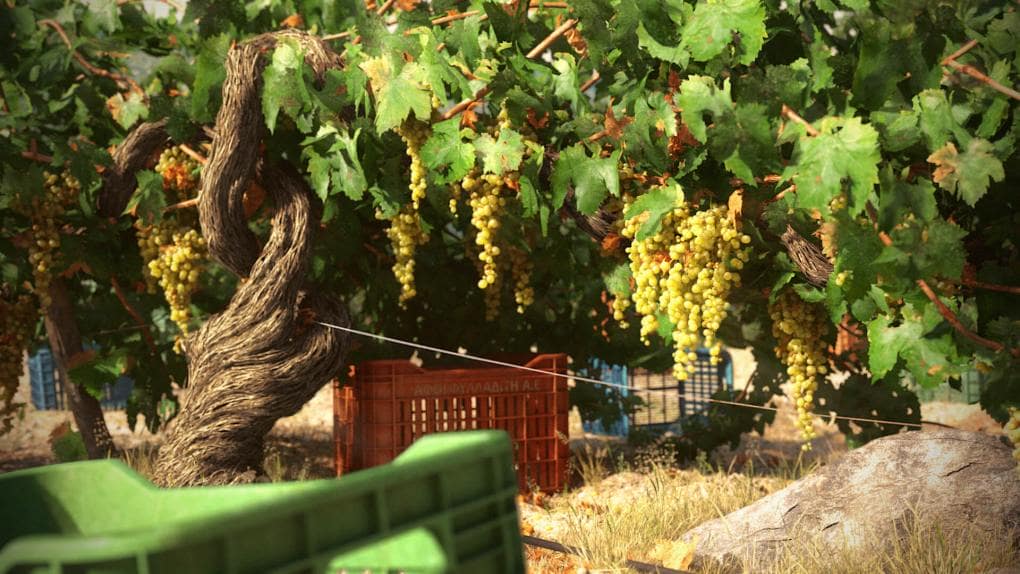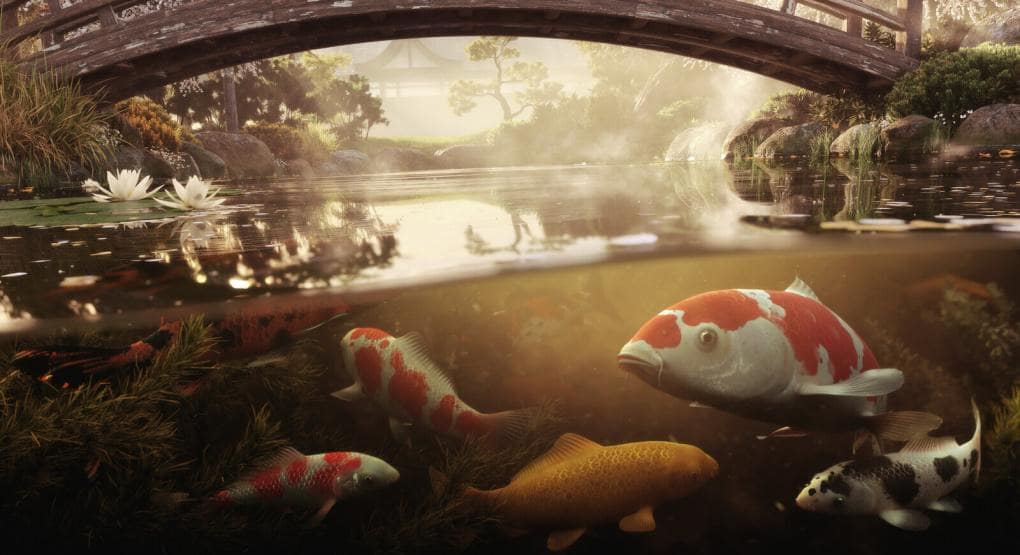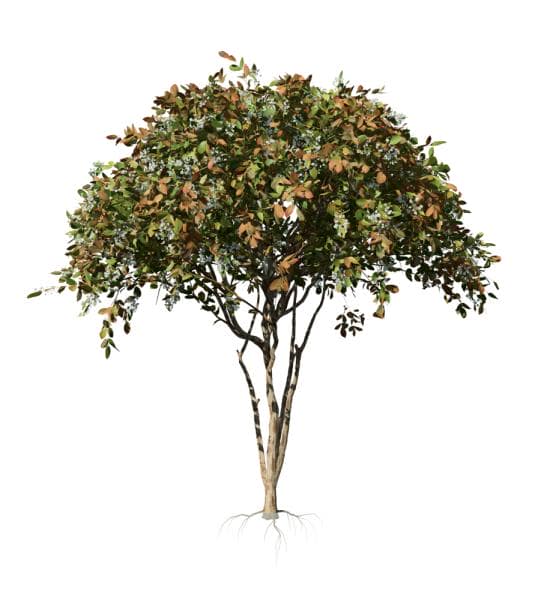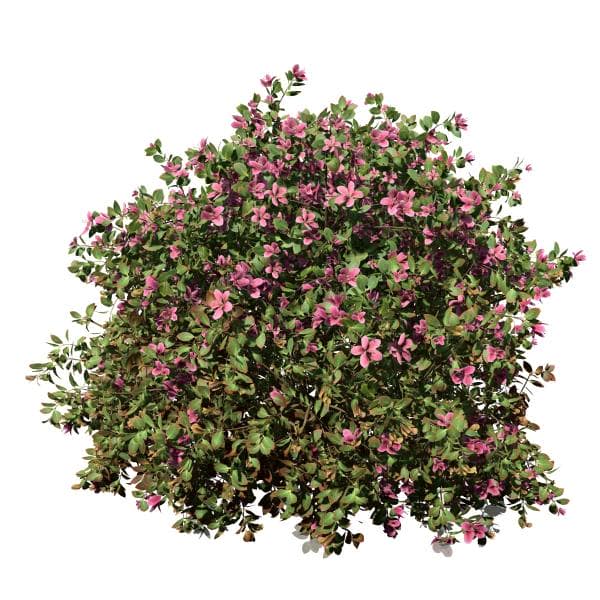To celebrate the return of warm weather and the upcoming spring blooms, we interviewed Floating House co-founder Anthony Fylladitis to learn how he grew into his career and brought his stunning digital flowers in “Marigold” to life.
Interview conducted by Katly Hong
Anthony Fylladitis (AF): I was born and raised in South Africa. When I was still very young we moved to a small island in Greece. Ever since I can I remember, I was surrounded by videotapes of classic cartoons, video games, comics, and action films. It was unavoidable that this would have an impact on my career path and it was one of the main reasons I chose to study 3D animation; I wanted to create my own stuff and be able to tell my own stories.
I studied 3D animation for 3 years and, soon after I graduated, I worked at a video game company, later in the archviz industry, and whatever I could get my hands on, making a living and learning as much as I could. Later I settled into the TVC industry where I worked on numerous TV commercials for more than 5 years. After gaining a lot of experience, I wanted to step a bit out of my comfort zone and moved to Melbourne where I worked on blockbuster films and TV series like Game of Thrones, Jumanji, Leftovers, and John Wick 2.


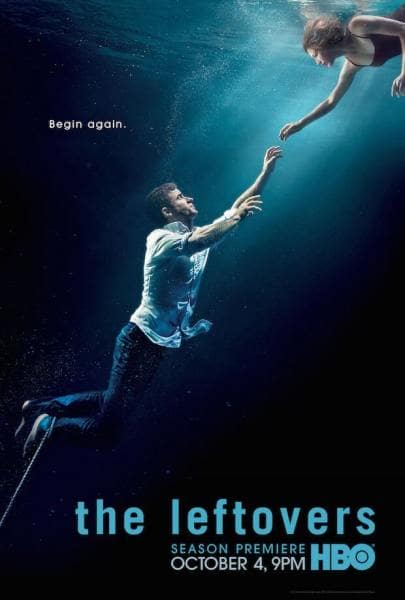

I had to consider what I’d done in the past 15 years and what I wanted to do next. After some chats with my younger brother, we decided to move back to Greece and start our own studio, Floating House.
Katly Hong (KH): After over 15 years in the industry, what are some of your favorite past projects?
AF: My mind goes directly back to my personal projects as these are the most fun for me. One of the first projects that I had a lot of fun exploring technically was also my first implementation of SpeedTree in my personal workflow, “Summer Grapes.”
I was blown away when I witnessed for the first time the possibilities of such a unique piece of software; I couldn’t help myself and had to create something right away.
Later on I enjoyed making “Koi Pond”: here I was, my first attempt to create a project entirely in Maya and get the hang of it. SpeedTree was a major player in this one; I got more familiar with it while I was working more in depth than I had before.
One of the projects I’m proudest of today is, “PROTEUS.” I worked on it with my brother, Stavros, for the launch of our studio. The challenges we were facing were huge and we faced doubts and discouragement countless times before making this project happen.
Fortunately, with great tools like SpeedTree, we tackled every type of plant we wanted which let us create compelling ecosystems without the need to dive into as much technical stuff.
KH: You started Floating House, with your brother: how do you divide tasks? Would you say that you specialize in any particular areas or would you call yourself a generalist to stay flexible depending on the project?
AF: There is a mix between the two; dividing tasks is crucial for keeping things organized and getting the job done on time, but, on a small team, you will need to be flexible from project to project regarding your role.
I’m always in charge of look development, lighting, rendering, 3D compositing, and environments in general, but if the project requires some animation or modeling at a time that no one else is available, I may jump on it.
As a rule of thumb, we try to divide tasks in a manner that everyone does the part they’re most specialized in.
Breaking Down “Marigold”
AF: Like every project that I’m about to start, I always take the time to study the subject; I take some time to analyze the anatomy of the plant, break it down into smaller parts, find its pattern, and plan out how to approach it technically.
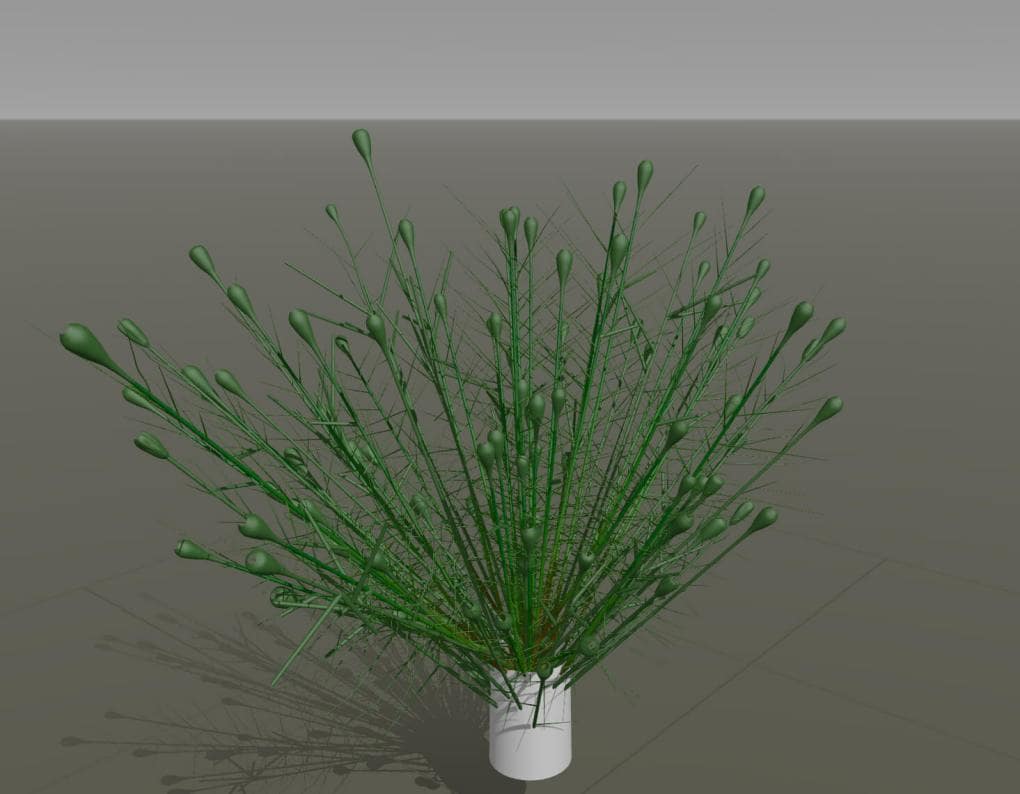
Step 1
Once I comprehend the anatomy of the plant, I start by laying out the major shapes. Just straight branches and stems to establish the density and overall silhouette of the plant, no noise or details whatsoever.
It is very important to take one step at a time without getting lost in the complex settings and tree nodes.
Step 2
Once I’m happy with the overall shape, I tend to isolate one branch to work more on the secondary shapes and whatever it needs to bring the plant to life without going any further in terms of detail.
By isolating a part of the plant and working on it, you have more control over what goes into your model without getting distracted by the overall plant and slowing down the process.
Focus only on the secondary elements, such as small branches, twigs, leaves, and flowers.
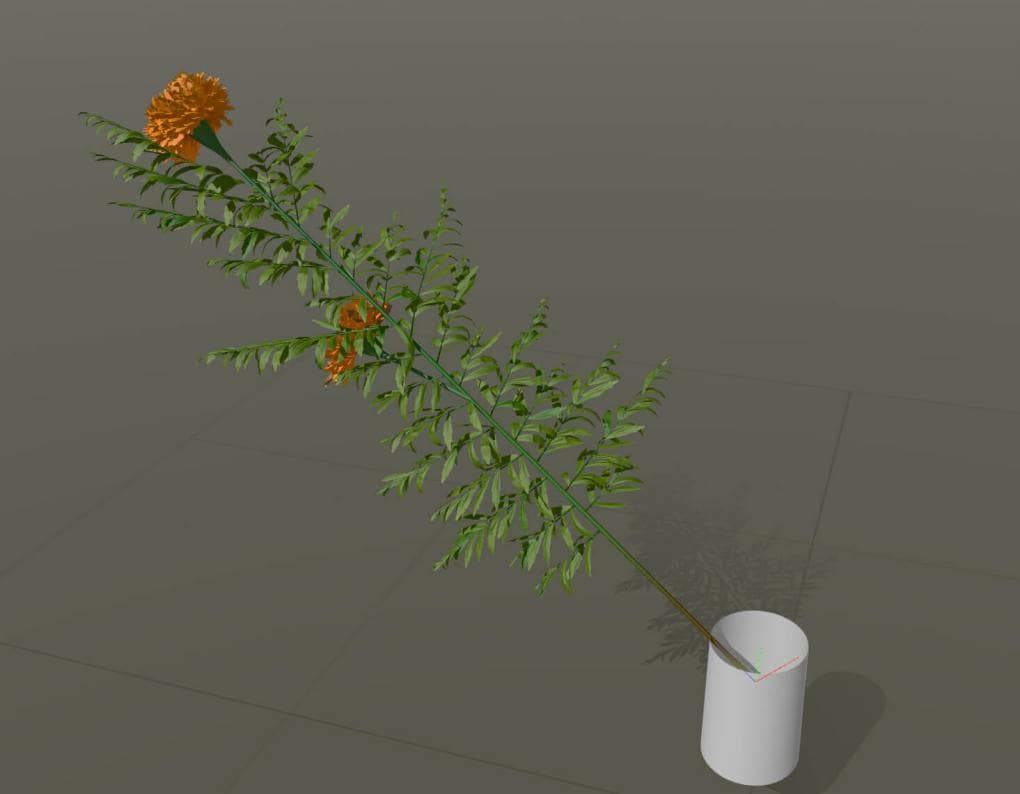
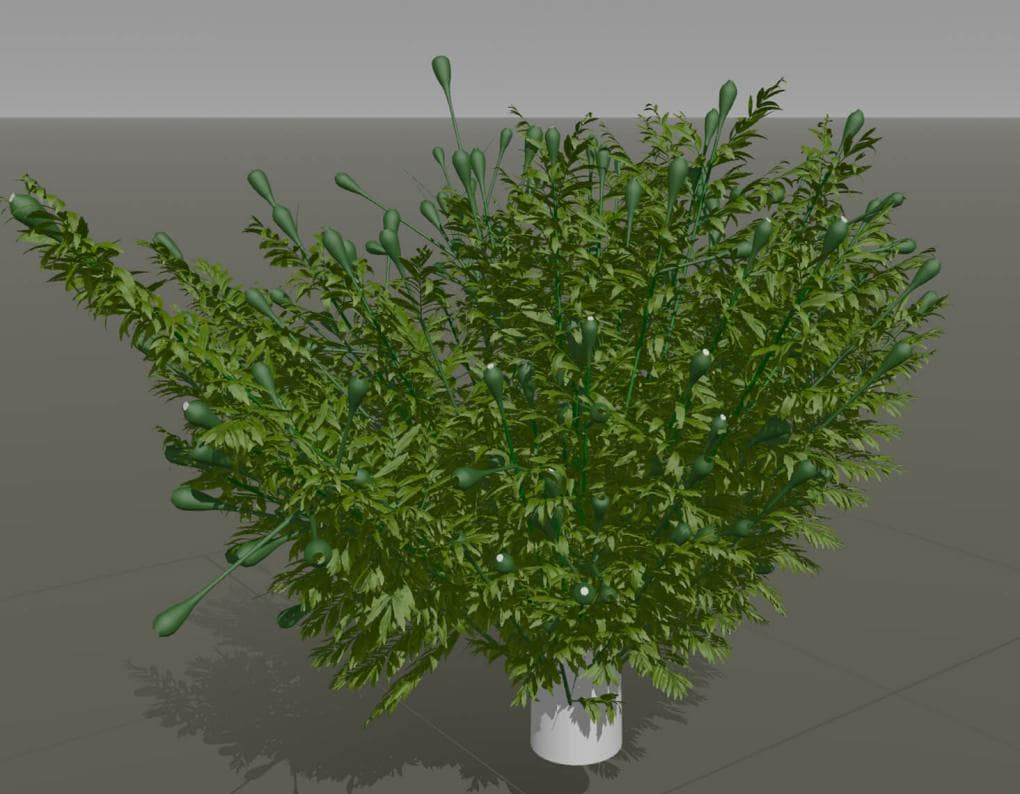
Step 3
Here you can see the initial block-out of the Marigold plant in SpeedTree with no noise, forces, etc. Just straight branches and leaves to establish density, form, and silhouette.
Step 4
Then I work on the flower parts and set the overall size and shape.
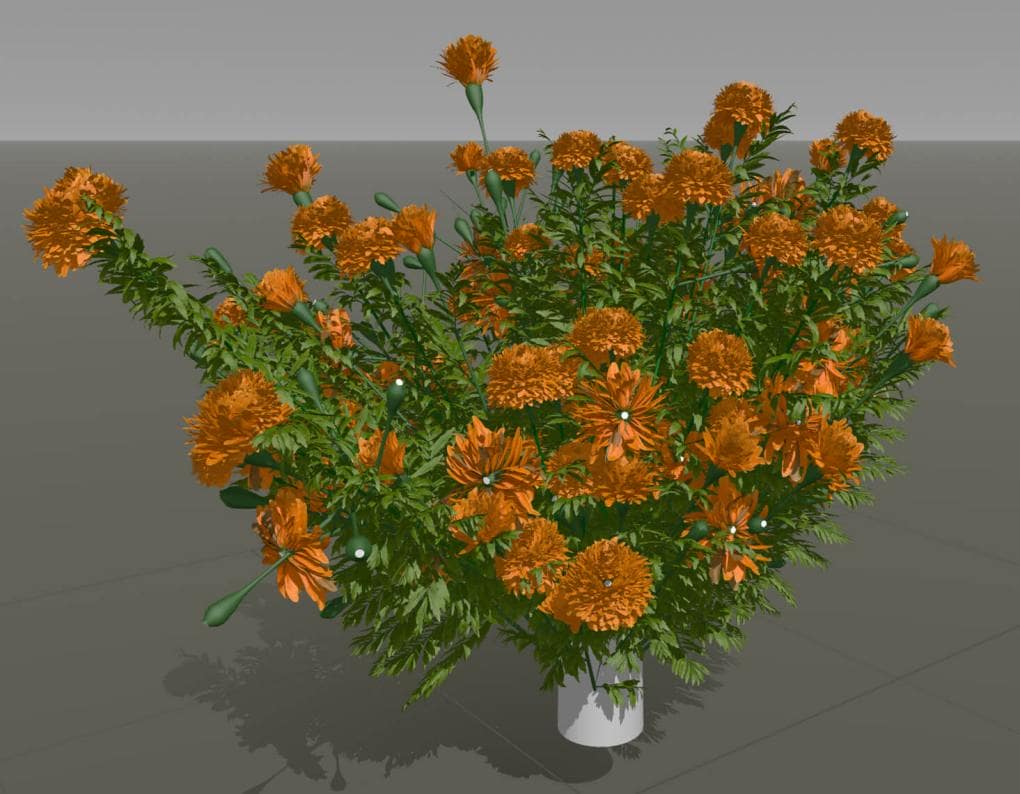
Step 5
When you get close to the general look of your plant, you can focus again on a single major branch and refine it until you get the ideal appearance. From there, you might need to jump back and forth to adjust and refine the shape of the whole plant.
Also, try to vary any necessary parameters of your model to enhance its realism and believability. Every plant is unique and it deserves a little personality: variation is a key ingredient for making any successful plant.
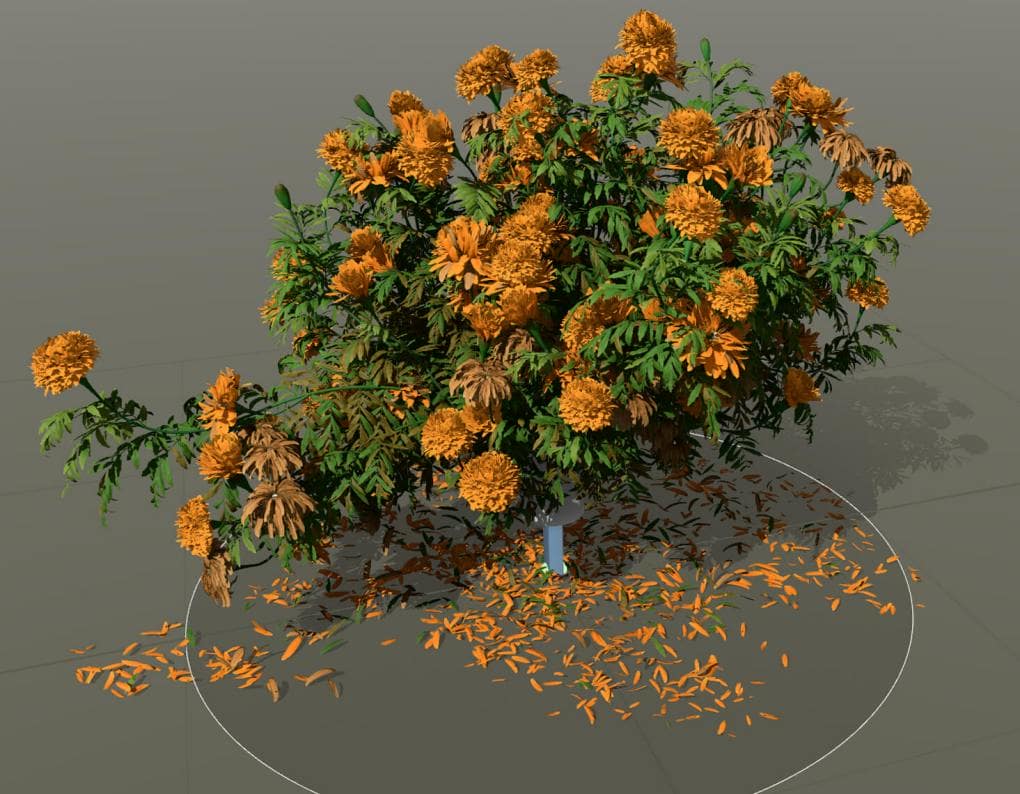
KH: How long have you been using SpeedTree and how has it contributed to your workflow?
AF: I think I started using SpeedTree 10 years ago when I first got into the VFX industry and I clearly remember how mind-blowing it was since day one.
The fact that I can create my own assets for the needs that I have, having full technical and artistic control over them is priceless. I can’t think of working in an environment nowadays without somehow using Speedtree to bring it to life.
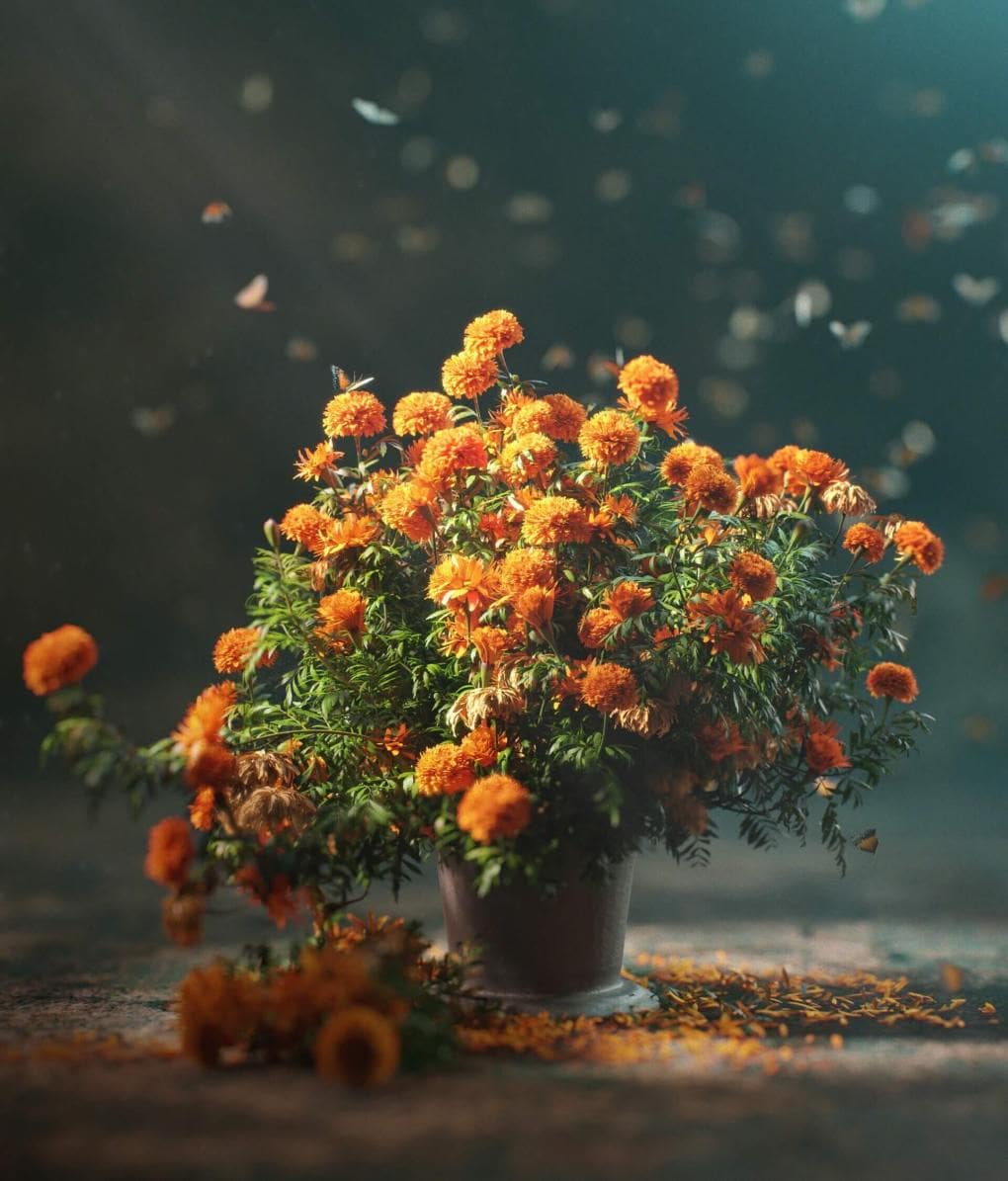
KH: What advice would you give to aspiring VFX artists?
AF: There is so much I could go over, especially mistakes I’ve made in the past, but I’ll try to touch on the basics for now.
I was very lucky to start my career at a time when social media was non-existent: nowadays it’s a medium for exposure but always keep in mind that, like anything else, you have to use it as a tool, not as something that you are required to please or follow.
You have to do what you have to do and then maybe post it on social media. Do not do something because you need to post on social media. Always remind yourself of what inspired you in the first place to start learning VFX and what you wanted to do. I’m pretty sure almost no one’s goal was “to get likes on Instagram or Facebook”.
Be careful of the pitfalls of trends: it’s very easy to be influenced by something that is a trend on social media and think that this is something that you should do as well. VFX is all about art and technical skills. So you always need to train both sides. By being true to what you love doing, it will make you stand out from the trends and recognition will come with time.
There are countless sources out there where you can learn many skills; countless hours of material and subjects. Be careful to consume only what you need and then apply it. Keep a balance between studying and actually doing the work.
KH: Is there anything else you’d like to discuss?
AF: There are some projects that we are ready to start and one of our goals is to implement SpeedTree into our pipeline and workflows as much as we can. We hope through 2021 we will have the chance to tap on some heavy environment work and take advantage of the strength of Speedtree!
Thank you, appreciate your time!

